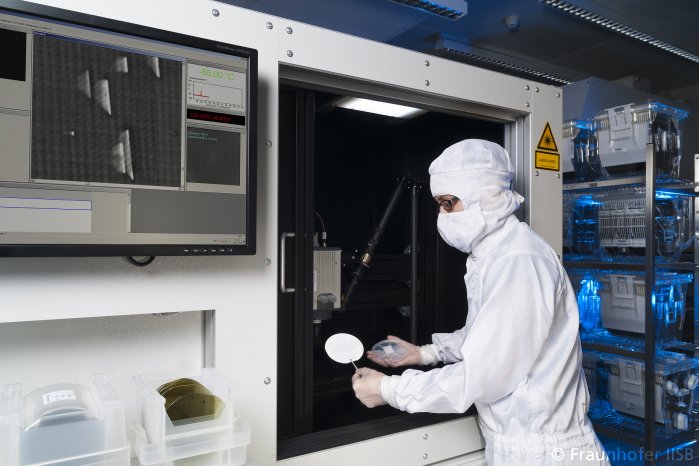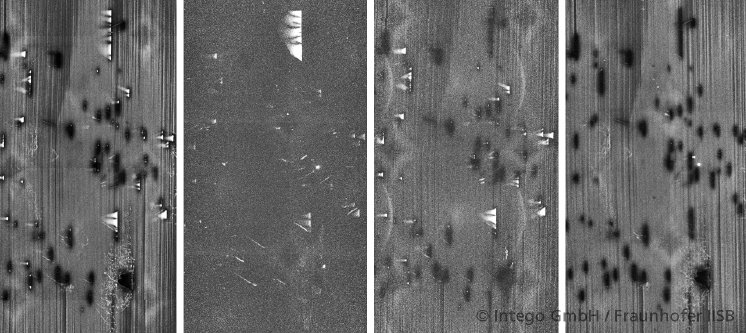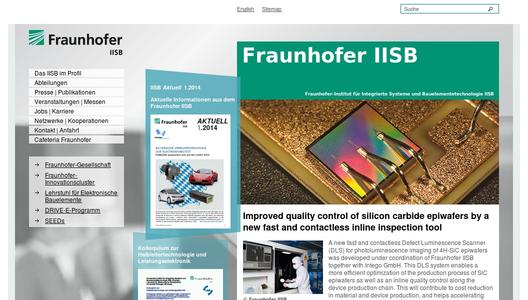With respect to structural defects, such as micropipes or other dislocation types, and their densities in substrates and epilayers, the material quality of silicon carbide (4H-SiC) has been improved greatly within the last years. But still, the performance of especially SiC bipolar devices and the yield of device production may be limited by residual structural defects in the epiwafers. Such defects originate in the substrate material or are generated during the epitaxial process like, e.g. down-fall particles, stacking faults, and dislocations.
To date, several characterization methods are well established for identification and distribution of such defects on the wafer level, but they are destructive (defect selective etching), cost-intensive (synchrotron x-ray topography), or time-consuming (both defect selective etching and x-ray topography). Hence, they are not suitable for a fast inline quality control of the material preparation and device production. As a non-destructive, contactless method allowing for identification of structural defects of 4H-SiC at room temperature, the photoluminescence (PL) technique is well known. In PL images, structural defects appear either as bright or dark items on the "grey" SiC background as 4H-SiC itself shows a low PL intensity due to its indirect band gap.
However, so far no PL setup exists which is fast enough for an inline defect analysis on full waferscale within a production environment. This obstacle has now been overcome in the course of the "SiC-WinS" project, funded by the Bavarian Research Foundation (BFS) under contract number AZ-1028-12. Together with the metrology specialist Intego Vision Systeme GmbH, the new PL imaging tool called defect luminescence scanner (DLS) was designed and fabricated under coordination of Fraunhofer IISB. The DLS allows for short PL measurement cycles and high throughput of SiC epiwafers at a high lateral resolution of 5 µm.
The DLS system is installed at Fraunhofer IISB and consists of a UV laser operating at 325 nm wavelength for PL excitation, a sample stage for scanning the SiC epiwafer, and an electron multiplying charge-coupled device (EMCCD) camera for fast image recording at a high signal-to-noise ratio. The high lateral resolution of 5 µm is achieved by a magnifying objective lens in front of the camera. For identification of defect types by their spectral fingerprints, different band-pass filters are installed. The DLS system can determine the defect types and their distribution on SiC epiwafers up to 150 mm diameter in less than 30 minutes. A routine for automated defect identification and counting in order to predict directly the device yield per epiwafer is currently under development.
Fraunhofer IISB performs service measurements with the new DLS system and identifies the defects and their distribution on SiC epiwafers on the full waferscale for epi houses and device manufacturers.


